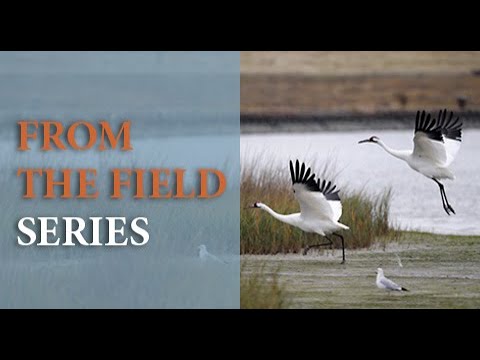– Understanding the ecological needs of whooping cranes wintering the middle Texas coast.
– The importance of water quality and quantity for the whooping crane’s habitat.
– Conservation efforts and strategies being applied in the region.
– The role of research in enhancing our knowledge and conservation practices for whooping cranes.
– How public awareness and community involvement are critical to whooping crane conservation.
Whooping cranes, North America’s tallest birds and one of the continent’s most endangered species have very specific habitat requirements, especially during their winter months along the middle Texas coast. The health and sustainability of these majestic birds rely heavily on the availability and quality of water in their wintering grounds. This article delves into the complex interplay between whooping cranes, their winter habitats, and the conservation efforts to ensure their survival.
The whooping crane’s wintering habitat along the middle Texas coast provides a crucial case study in wildlife conservation, emphasizing the importance of water for whooping cranes. These areas, characterized by marshes, estuaries, and bays, offer the cranes shelter and a reliable food supply, contingent on the ecosystem’s overall health, which is inextricably linked to water quality and availability. Pollutants and reduced freshwater inflow affect the abundance and quality of blue crabs and wolfberries, the cranes’ primary food sources, directly impacting their survival and reproduction rates.
Conservation initiatives play a pivotal role in safeguarding the wintering habitats of the whooping crane. Habitat restoration and protection are at the forefront, with efforts focused on ensuring adequate water supplies while maintaining the ecological integrity of the coastal marshes and estuaries. This includes managing freshwater inflows to sustain the ecological balance needed to support the cranes and their prey. Moreover, strict regulation of pollutants and contaminants entering these waters is crucial in preserving the quality of the habitat.
Research significantly contributes to the conservation of whooping cranes by offering insights into their behavioral patterns, habitat usage, and food preferences. Ongoing studies on the effects of water salinity levels, for instance, help guide decisions on freshwater management to align with the cranes’ needs. Scientists and conservationists rely on tracking and monitoring data to evaluate the effectiveness of current conservation measures and identify areas requiring additional attention or adjustment.
Public awareness and community involvement stand as vital components in the conservation equation. Educating the public about the whooping crane’s plight and the significance of their wintering habitat fosters a broader support base for conservation efforts. Community-based initiatives, such as citizen science programs and local conservation projects, encourage active participation in preserving these iconic birds.
Effective conservation of whooping cranes wintering along the middle Texas coast requires a multifaceted approach, blending scientific research, habitat management, regulatory measures, and public engagement. Each element supports the others, creating a comprehensive strategy aimed at not only preventing the extinction of whooping cranes but also ensuring the resilience of their winter habitat. Through concerted efforts from conservationists, researchers, policymakers, and the community, there is hope for the whooping crane’s continued recovery and eventual thriving along the Texas coast.
*****
Source Description
https://savingcranes.org/webinars/ James’s webinar will focus on the water needs of Whooping Cranes wintering on the Middle Texas Coast – both drinking water and the water needed to maintain the wintering coastal marsh habitat and food sources, such as blue crabs, they require to thrive.
The freshwater required to meet these water needs, largely derived from freshwater inflows discharging from rivers into the bays, is subject to greater and greater amounts of diversion and use for municipal, industrial and agricultural purposes before it reaches the bays. In addition, increasingly severe droughts in the watersheds of the estuaries along the Middle Texas Coast amplify the challenge of providing fresh water for environmental needs.
The International Crane Foundation has partnered with several organizations to address this issue, including the San Antonio Bay Partnership, Coastal Bend Bays and Estuaries Program, Matagorda Bay Foundation and Texas Water Trade.
Sponsored by the Texas Crane Council in honor of the 27th Annual Whooping Crane Festival in Port Aransas, Texas.https://www.portaransas.org/whooping-crane-festival/the-2024-festival/


